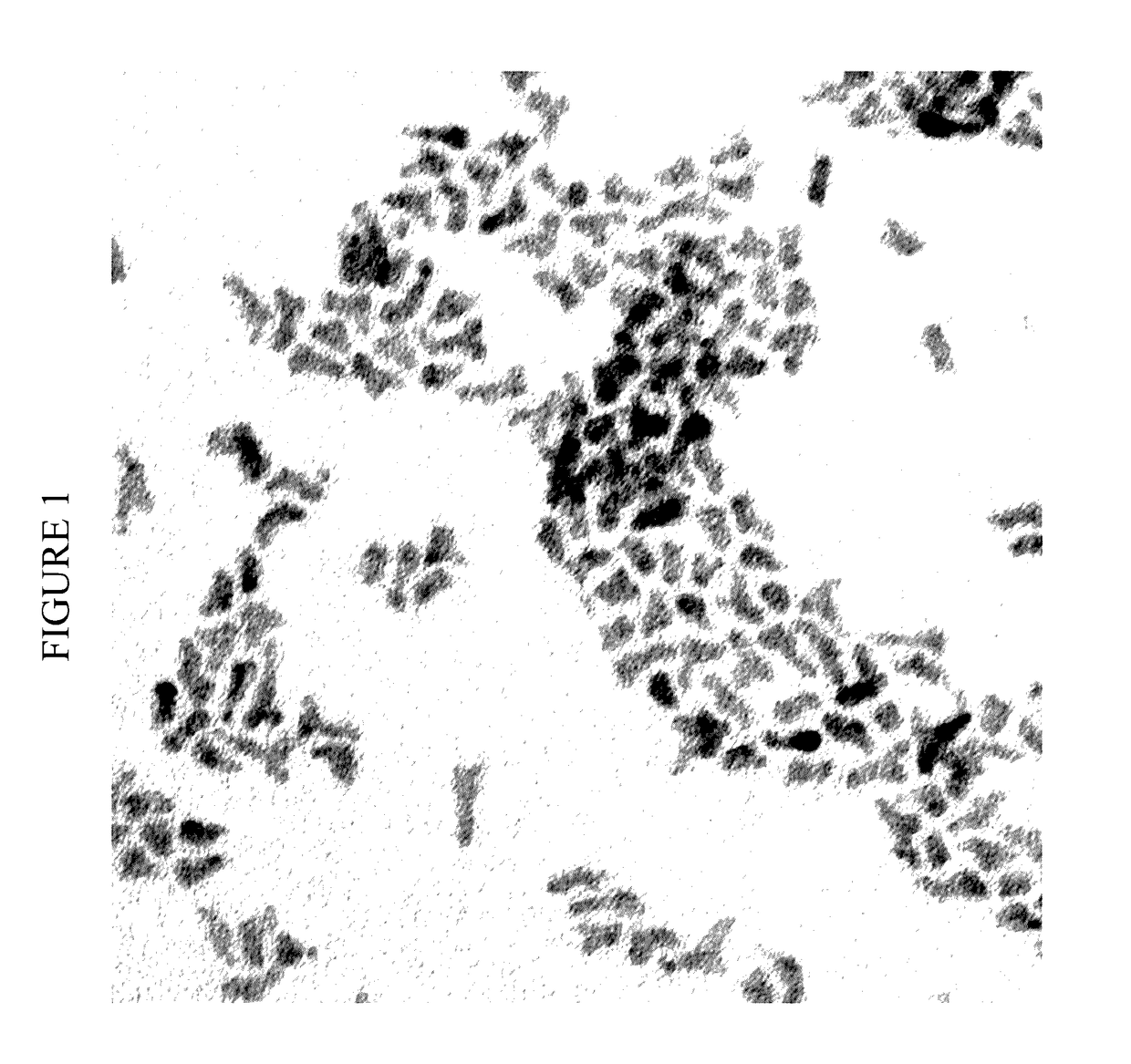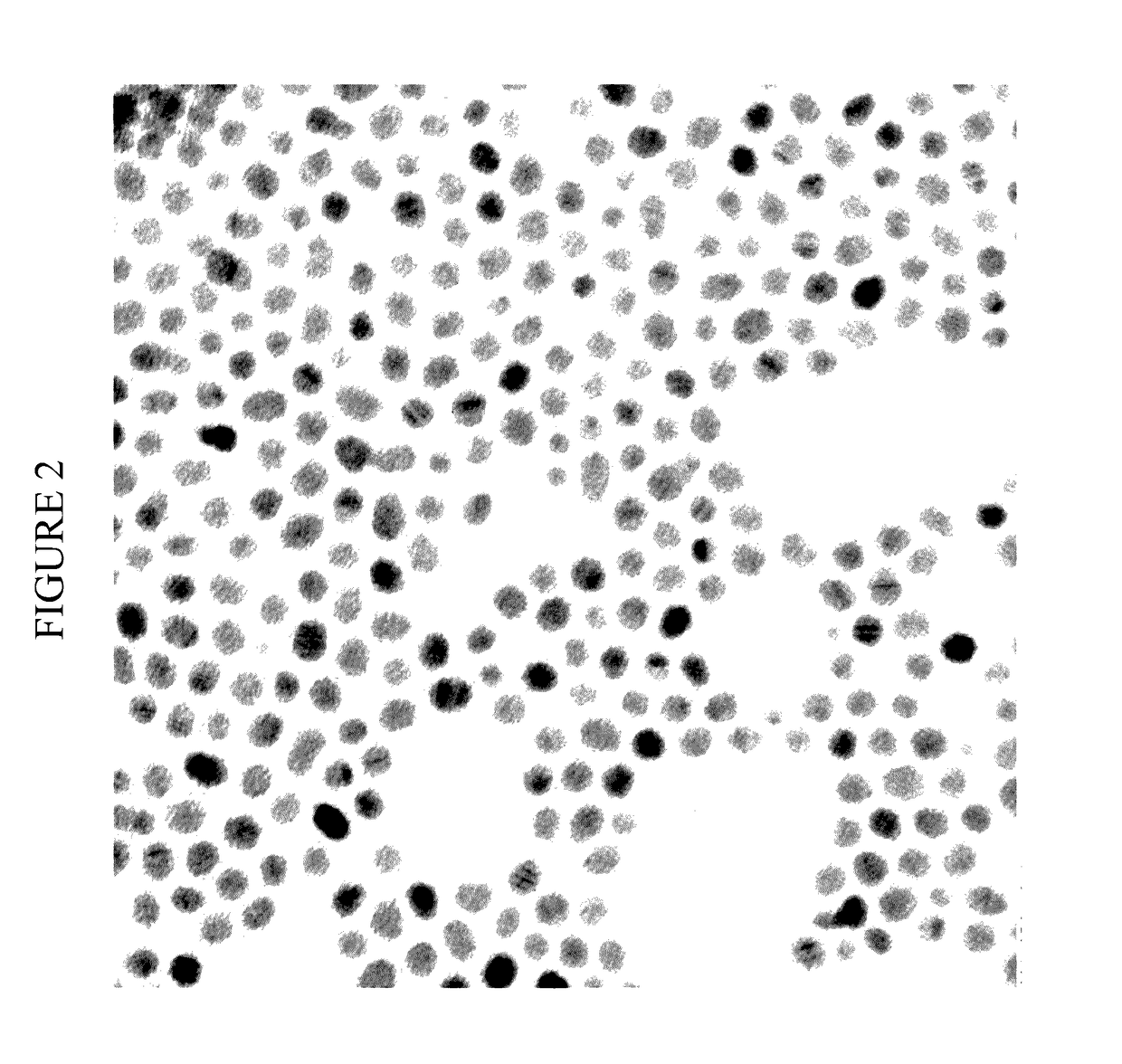Highly luminescent cadmium-free nanocrystals with blue emission
a nanocrystal and blue emission technology, applied in the field of nanotechnology, can solve the problems of limiting the future application of cadmium-based nanoparticles, cadmium, mercury, lead, etc., and achieve the effect of only producing red and green luminescence in the nanostructur
- Summary
- Abstract
- Description
- Claims
- Application Information
AI Technical Summary
Benefits of technology
Problems solved by technology
Method used
Image
Examples
example 1
Synthesis of ZnSe Nanostructures
[0184]For preparation of 9.82 g of ZnSe core (assuming 100% production yield):
[0185]Chemicals used:[0186]Diethylzinc (ZnEt2);[0187]Selenium (Se);[0188]Trioctylphosphine (TOP);[0189]Diphenylphosphine (DPP);[0190]Oleylamine (OYA);[0191]Toluene;[0192]Ethanol (EtOH); and[0193]Hexanes.
[0194]Measure out 15 mL of OYA into a 250 mL 3-neck flask along with a stir bar. Equip the flask with an air-free adaptor on a Schlenk line. Use rubber septa to close the two side-necks of the flask. Evacuate the flask and then purge it with nitrogen. Repeat this step 3 times. Heat the solution to 110° C. and maintain at this temperature for 30 minutes under evacuation.
[0195]Prepare a syringe containing the following chemicals in the glovebox:[0196]DPP / TOP (45% DPP by weight)—500 μL;[0197]TOP—1 mL; and
[0198]HSe—1.5 mL (1.92 M solution of Se dissolved in TOP).
[0199]Prepare an injection solution containing the following chemicals in the glovebox:[0200]TOP—2.5 mL; and[0201]ZnEt2...
PUM
| Property | Measurement | Unit |
|---|---|---|
| emission wavelength | aaaaa | aaaaa |
| emission wavelength | aaaaa | aaaaa |
| particle size | aaaaa | aaaaa |
Abstract
Description
Claims
Application Information
 Login to View More
Login to View More - R&D
- Intellectual Property
- Life Sciences
- Materials
- Tech Scout
- Unparalleled Data Quality
- Higher Quality Content
- 60% Fewer Hallucinations
Browse by: Latest US Patents, China's latest patents, Technical Efficacy Thesaurus, Application Domain, Technology Topic, Popular Technical Reports.
© 2025 PatSnap. All rights reserved.Legal|Privacy policy|Modern Slavery Act Transparency Statement|Sitemap|About US| Contact US: help@patsnap.com



